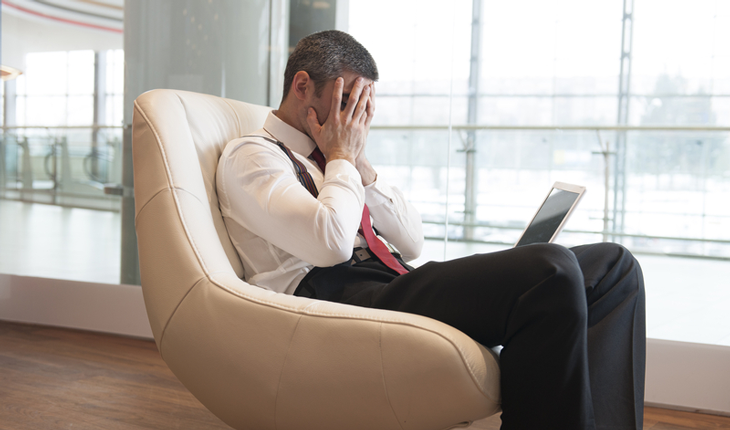
It is estimated that around 40 million US adults aged 18 and older suffer from an anxiety disorder. In fact, anxiety disorders are among the most common mental health disorders not only in the US but worldwide. Recent studies estimate that approximately 1 in 3 people across the globe are struggling with an anxiety disorder. Among these individuals with anxiety disorder, it is believed that close to 6 million adults suffer from panic-related anxiety in the US alone (approx. 2.7% of the total population).
Interestingly, in most anxiety disorders, excluding social anxiety and obsessive-compulsive disorder, women are considerably more likely to be affected than men. Panic-disorder is no exception. According to the Anxiety and Depression Association of America, or ADAA, when it comes to panic-disorder anxiety, women are almost twice as likely to be affected than men. That being said, both sexes can suffer from panic attack-inducing anxiety, which typically develops during early adulthood. Moreover, panic anxiety has a high comorbidity rate with major depression, which can only worsen existing symptoms.
At first glance, these numbers and statistics might be intimidating, but what many people don’t realize is that anxiety disorders are highly treatable. There are many reasons for this, but one of the most influential causes is when people do not recognize that their disorder is real and able to be diagnosed. Many people struggling with anxiety may mistakenly classify their anxiety as being harmless paranoia or jitters when, in reality, what they may be experiencing may be more pervasive. Unfortunately, as with any issues pertaining to mental health, anxiety sufferers, too, often face a stigma that recognizing their anxiety as being a legitimate issue means admitting that there is something mentally and fundamentally “wrong” with them.
Anxiety is Highly Treatable
This mode of thinking is not only toxic but dangerous, as well. Mental health is a serious concern, and is not to be dismissed, regardless of how seemingly mild. To have anxiety is not to have something “wrong” with oneself, but rather to acknowledge that there is a challenge that needs to be overcome to sustain a happy and fulfilling life. By reframing this thought pattern, we can not only allow ourselves to feel better about ourselves and what we’re going through, but also we open ourselves up to the opportunity to heal and overcome those challenges we had been facing.
Fear of admitting anxiety can prevent us from seeking the treatment we need to move past it. Anxiety, even when it induces panic-attacks, can be treated by a number of therapies. Cognitive Behavioral Therapy (CBT) is among one of the most common options for treating anxiety, but it is far from the only one. Other popular therapeutic treatments for anxiety sufferers include Exposure Therapy, Acceptance and Commitment Therapy (ACT), Interpersonal Therapy (IPT), and Dialectical Behavioral Therapy (DBT), to name a few.
How to Treat Daily Anxiety
But what happens when treatment isn’t readily accessible? For those of us who do seek regular treatment for our anxiety disorders, there may be times when we are experiencing symptoms of anxiety, like panic attacks, while we’re out and about during our daily lives. In these situations, our therapists are nowhere to be found, and we’re left to face our anxieties more or less on our own. During such times, there are three ways that we can help reduce our symptoms of anxiety, which therapists frequently recommend:
1. Be Mindful
When struggling with panic attacks or other symptoms of anxiety therapists will frequently advise their patients to practice mindfulness. Mindfulness teaches us to ground ourselves in the present moment and our experiences therein, rather than getting stuck in the chaotic whirlwinds that are taking place in our heads. In other words, to be mindful is to be self-aware of oneself and what one is feeling. We might think to ourselves: “ok, what I’m feeling right now is anxiety, I’ve felt this before. I will allow my body to experience these reactions but I know what they are and why I’m feeling them, therefore I can get through this.”
Sometimes, the key to resolving a moment of panic is to not fight it. To fight the body’s natural impulse is to oftentimes validate the reason for feeling anxious. For example, if we’re panicking about being near a certain place, it is better to acknowledge what we are experiencing and why rather than trying to shut down by saying “no! Don’t feel this! This is bad!” Why? Because doing this can sometimes add to our existing feelings of panic by creating a new anxiety surrounding the feeling itself. By being self-aware and allowing the feeling to pass, we can allow ourselves to move beyond the panic more easily rather than adding to it.
2. Don’t Run
Perhaps we’ve heard at some point or another that it’s good to face our fears. More often than not, this is easier said than done. But there is truth to this statement. Building on our previous point, by avoiding a situation that induces panic, we might actually be contributing to the anxiety itself. By avoiding our fears, we actually make them stronger by validating that there is, in fact, something to be afraid of. Because of this, it’s important for us to remember to face our anxieties and allow ourselves to move past those feelings that come with it. This is how we overcome our anxiety and grow, not by avoiding it in the first place.
3. Take Deep Breaths
The third and final technique for reducing symptoms of anxiety is a bit of a cliche but that’s only because it’s truly effective. Take deep, mindful breaths. More than just breathing, focus on the sensation of each inhale and exhale; the feeling of your lungs expanding and contracting, pressing against your diaphragm. Why do this? Because it can allow us to surpass feelings of panic rather than be bombarded by them. Focusing on breathing or another tangible, calming, physical experience, can reduce our muscle tension and overall feeling of anxiousness, which can contribute to the severity of panic attacks. Visualization can also help, wherein one places themselves in a situation or place that causes them to feel peaceful rather than anxious.
Regardless of what technique is used, anxiety can be overcome. Going to therapy can help us fortify ourselves against our anxiety by teaching us coping methods such as these that we can use when symptoms arise so that we can address those feelings of discomfort rather than confront them. Through careful treatment, anxiety sufferers can hope to reach a point where their anxiety no longer prevents them from leading a fulfilling and happy life. In essence, there are answers available to those who seek them.
To schedule an appointment with one of our therapists, call 561-338-7725




